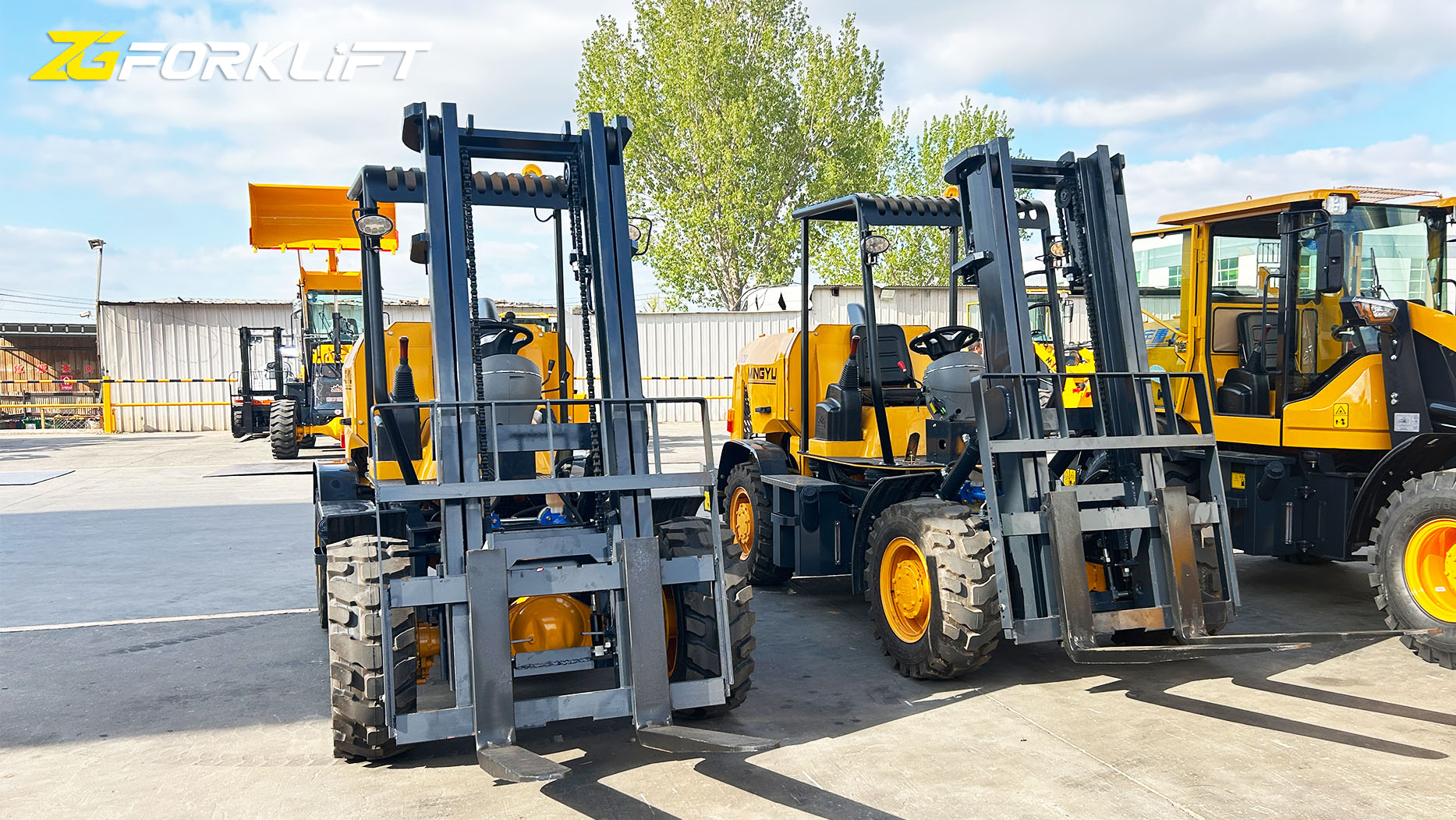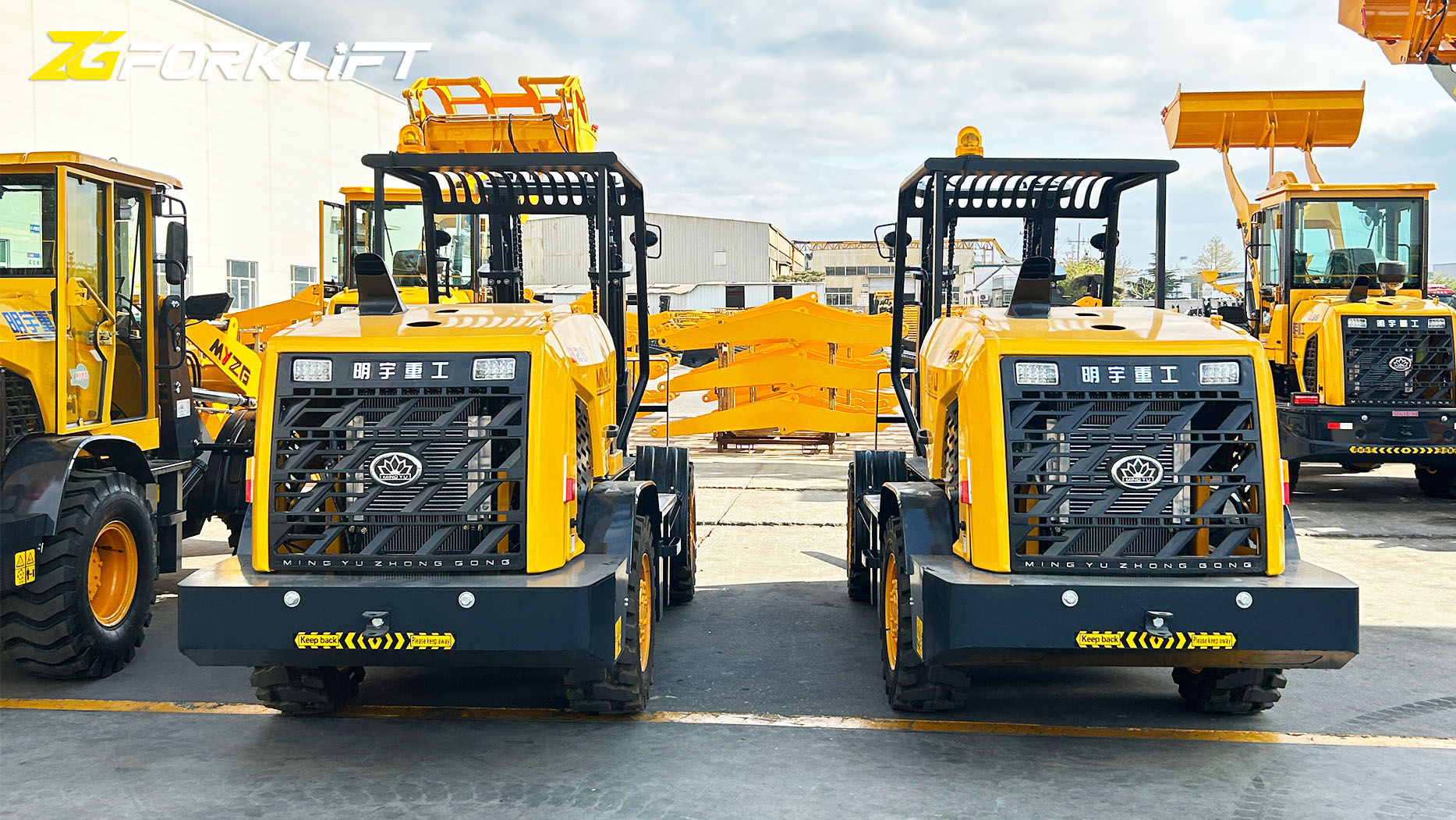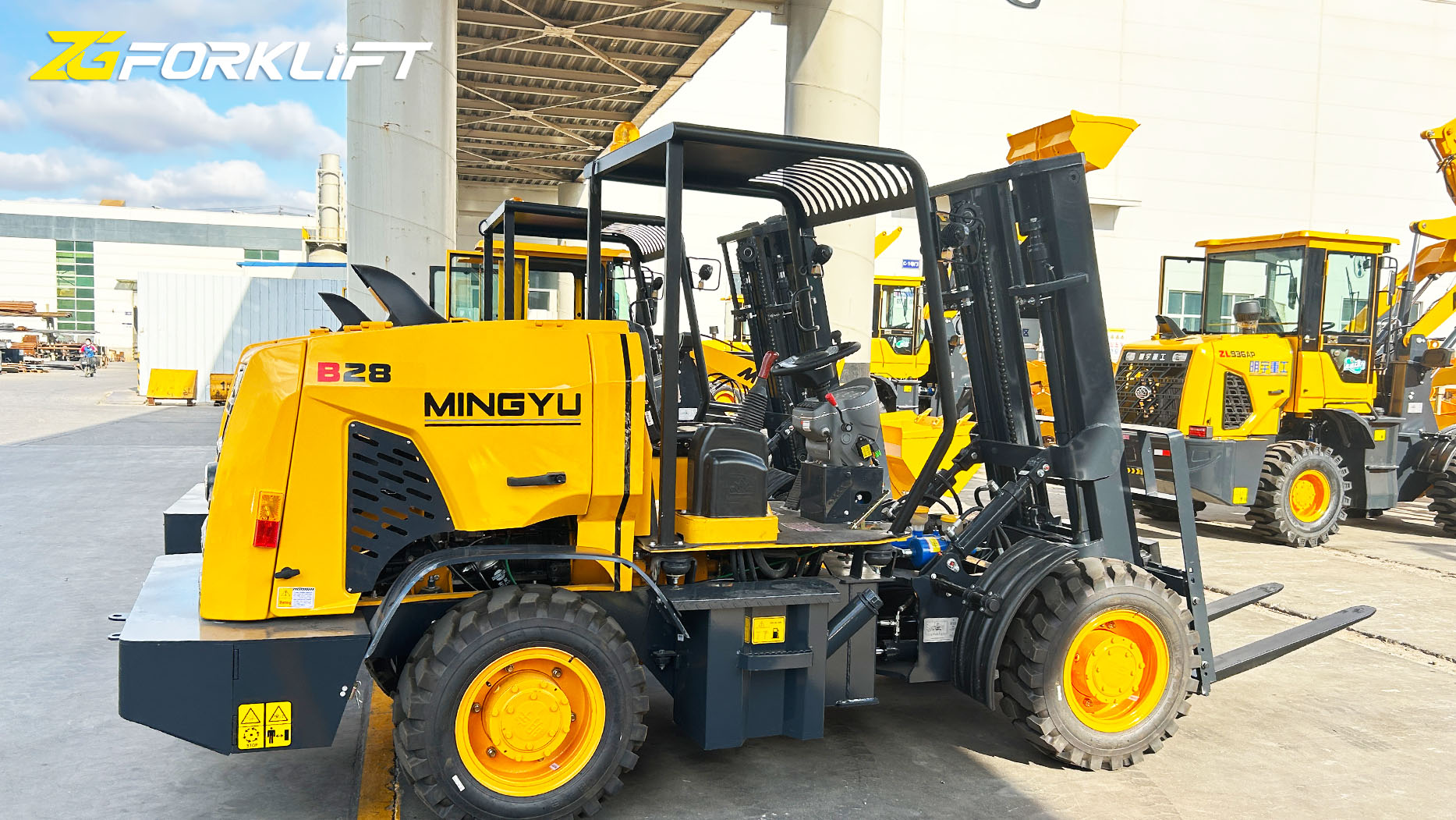Two Basic Styles of Rough Terrain Forklifts: A Comparative Analysis
Rough terrain forklifts are indispensable in construction, agriculture, and other industries where navigating uneven ground and handling heavy loads in challenging environments is essential. These specialized vehicles are designed to operate effectively on surfaces that would be impassable for standard forklifts. While the term "rough terrain forklift" encompasses a range of models, two primary styles dominate the market:
1. Vertical Mast Forklifts:
Description: These are the most common type of rough terrain forklift. They feature a vertical mast that raises and lowers the load using a system of chains and pulleys. This design is simple, robust, and well-suited for a variety of applications.
Key Characteristics:
Simple Design: The vertical mast design is straightforward and easy to maintain.
High Load Capacity: These forklifts are typically designed to handle heavy loads, often exceeding 10,000 pounds.
Good Stability: The vertical mast configuration provides good stability, making them suitable for handling heavy loads on uneven terrain.
Limited Reach: The primary limitation of vertical mast forklifts is their limited reach. They can only lift and lower loads vertically, restricting their ability to place materials at varying distances.
Applications:
Construction: Transporting building materials, loading and unloading trucks, moving heavy equipment.
Agriculture: Loading and unloading agricultural products, moving and stacking materials in barns and fields.
Mining: Transporting minerals and ores, maintaining mining equipment.
Forestry: Logging operations, maintaining forest roads.
2. Variable Reach Forklifts (Telescopic Handlers):
Description: These versatile machines feature a telescopic boom that extends horizontally, allowing them to reach and place materials at various heights and distances. This unique design significantly enhances their reach and flexibility.
Key Characteristics:
Versatility: The telescopic boom provides exceptional reach and flexibility, enabling operators to place materials in hard-to-reach areas.
High Lift Capacity: Many telescopic handlers can handle heavy loads, although their capacity may be slightly lower than some vertical mast models.
Enhanced Maneuverability: While larger than some vertical mast models, telescopic handlers often offer good maneuverability, especially in applications requiring precise load placement.
Complex Design: The telescopic boom mechanism adds complexity to the machine's design, potentially increasing maintenance requirements.
Applications:
Construction: Placing concrete, erecting scaffolding, lifting and positioning heavy equipment.
Agriculture: Loading and unloading feed, reaching high areas in barns and silos.
Maintenance: Reaching high wires, trimming trees, performing maintenance on structures.
Landscaping: Planting trees, maintaining parks and gardens.
Choosing the Right Rough Terrain Forklift:
The choice between a vertical mast and a variable reach forklift depends on several factors, including:
Load Capacity: Determine the maximum weight of the loads you will be handling.
Lift Height Requirements: Consider the maximum height to which you need to lift materials.
Reach Requirements: Determine whether you require the extended reach capabilities of a telescopic boom.
Terrain Conditions: Evaluate the specific terrain conditions you will be operating in, including slope, obstacles, and ground conditions.
Budget: Consider the initial purchase cost, operating costs, and maintenance requirements of each type.
Application Requirements: Analyze the specific tasks you will be performing with the forklift.
Conclusion:
Both vertical mast and variable reach forklifts play crucial roles in various industries. By carefully considering the specific requirements of your application, you can select the most appropriate type of rough terrain forklift to enhance productivity, improve safety, and optimize your operations.
Post time:Feb.12.2025



